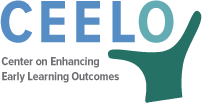 Are You a Leader or a Manager? Leadership and management serve two different, though complementary, functions and both are necessary for leading an early education effort. Programs must be managed for fiscal and programmatic integrity and accountability. Without adequate management and oversight, effectiveness can be compromised. Administration of federal or state programs requires deft management. Leadership, on the other hand, demands beliefs and behaviors contributing to “big picture” and long-term systems thinking. Leadership capitalizes on opportunities for continuous improvement rather than maintaining the status quo. From Bennis, W. (1989). On becoming a leader. New York: Basic Books.
Are You a Leader or a Manager? Leadership and management serve two different, though complementary, functions and both are necessary for leading an early education effort. Programs must be managed for fiscal and programmatic integrity and accountability. Without adequate management and oversight, effectiveness can be compromised. Administration of federal or state programs requires deft management. Leadership, on the other hand, demands beliefs and behaviors contributing to “big picture” and long-term systems thinking. Leadership capitalizes on opportunities for continuous improvement rather than maintaining the status quo. From Bennis, W. (1989). On becoming a leader. New York: Basic Books.
Resource
Activity
- A Leader You Admire
What is the Best Leadership Style and Strategy? Numerous books and articles have been written about leadership and what it takes to be a leader. Personal characteristics such as passion, honesty, integrity, communication, confidence, optimism, commitment, inspiration, creativity, insightfulness, decisiveness, and persistence have been identified repeatedly. Researchers such as Steven Covey (1998) have identified key habits of effective leaders and others have developed assessments such as the Myers-Briggs Personality Inventory and StrengthsFinder 2.0 to assist individuals in understanding, cultivating, and capitalizing on personal traits to enhance individual leadership skills.
There is no single best leadership style or strategy. Early education leaders need to be both skillful and adaptive. An authoritarian approach will work masterfully in one situation and fail miserably in a dozen others. Different situations, stakeholders and contexts require different approaches to achieve desired outcomes. Situational leadership (Hersey & Blanchard, 1969) was one of the first attempts to contextualize leadership styles (directing, coaching, supporting, delegating) based on the level of commitment and competence of those involved. More recently, Heifetz and Linksy (2002) redefine adaptive leadership where “leadership is an improvisational art,” and the collective involvement of multiple stakeholders is harnessed to address vexing issues such as school readiness and achievement gaps. Heifetz and Linksy remind us that leadership is a risky enterprise given what is at stake and the obstacles to be faced.
Resources
- The Seven Habits of Highly Effective People (Covey, 1998)
- Leadership on the Line (Heifetz & Linsky, 2002) (article, paper, book, video)
- The Leader’s Checklist (article)
- Myers-Briggs Type Indicator
- A Survival Guide for Leaders (Heifetz & Linsky, 2002)
Activities
- Leadership Skills and Qualities Checklist
- Choose Your MBTI (online interactive description of 16 types of personality preferences)
Are You a Leader of All Ages? As early education leaders interact with people of different ages, it is helpful to recognize the existence of generational differences. Leading a group of Baby Boomers requires a different mindset and skills than leading Millennials. Leadership with multigenerational groups becomes a complex endeavor. To be most effective, early education leaders recognize their personal generational preferences may not translate well to working with others of different ages and adapt their understanding, planning, and interactions according to their audience.
WORKPLACE CHARACTERISTICS
Resources
What Are Your Limits? Early education leaders are generally optimistic with admirable intentions to improve the lives of young children. Stepping into a leadership role at the state or local level, this optimism may be tempered quickly with the realization there are limitations inherent in their assigned role within the organization and broader early childhood system. Pillsbury explains the embedded nature of person – role – system, recognizing there are boundaries to one’s authority, responsibilities, and tasks (B/ART). Sometimes these boundaries are actual, other times perceived or self-imposed. Early education leaders who recognize real and perceived boundaries associated with their position in relation to their agency and larger system are likely to be more intentional and effective in their efforts.
SYSTEM ROLE PERSON
Resources
- Person – Role – System Framework (Annie E. Casey Foundation)
- Awareness at the Person – Role – System Level (Pillsbury)
- B/ART
- Accountability Pathway (Pillsbury)
Activities
- B/ART Template
- Accountability Pathway (Pillsbury)
